Abstract
1. Blood pressure, cardiac function and forearm blood flow following voluntary maximal upright bicycle exercise were studied in thirteen normal volunteers in a cross-over design against a control day. 2. After exercise there was a short-lived (5-10 min) increase in systolic blood pressure, peak aortic blood velocity and aortic acceleration suggesting a persistence of the positive inotropic influence of exercise. 3. Systemic vasodilation, which was seen immediately exercise stopped, lasted at least 60 min. This was associated with a reduction in diastolic blood pressure for the whole hour. After 30 min systolic blood pressure was also reduced. Heart rate and cardiac output were still significantly elevated and systemic vascular resistance still reduced at 60 min post-exercise. 4. A non-exercising limb vascular bed (forearm) showed a marked vasodilation for 1 h after predominately leg exercise indicating the presence of a vasodilatory influence affecting vascular beds other than the exercising muscle groups.
Full text
PDF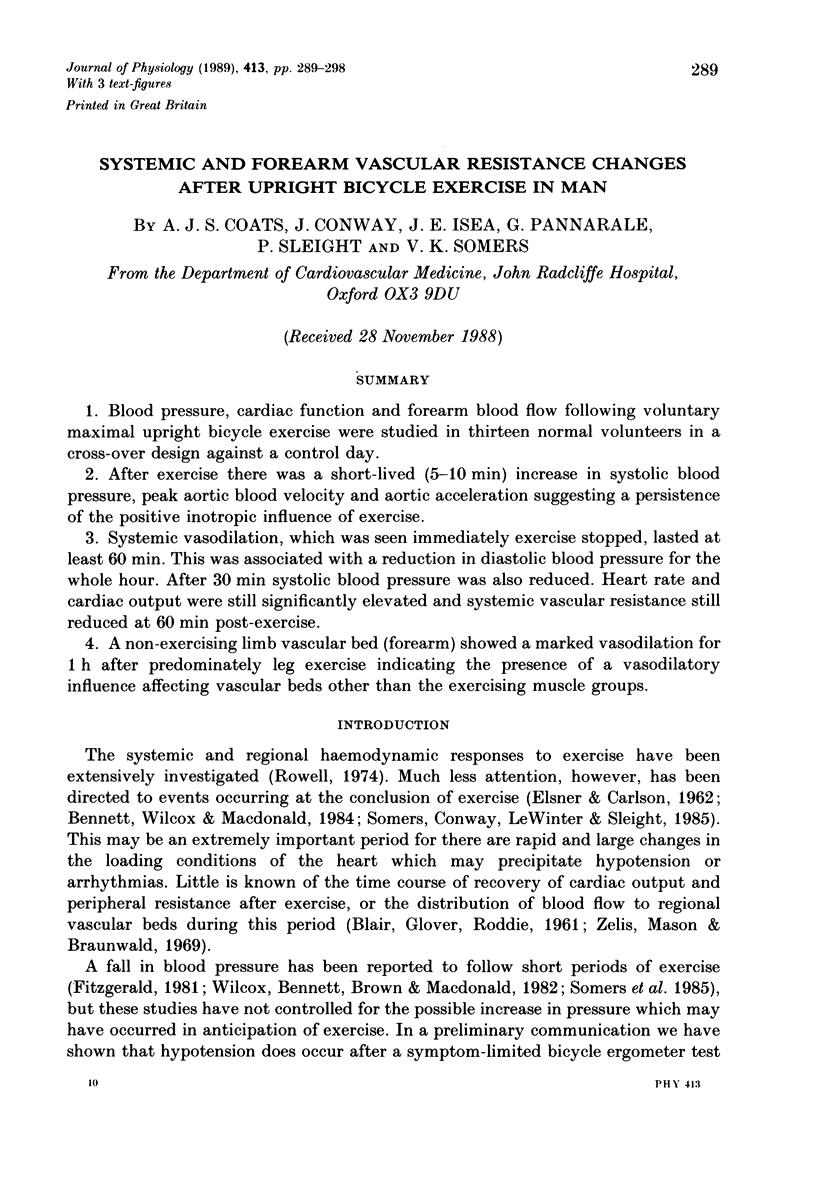
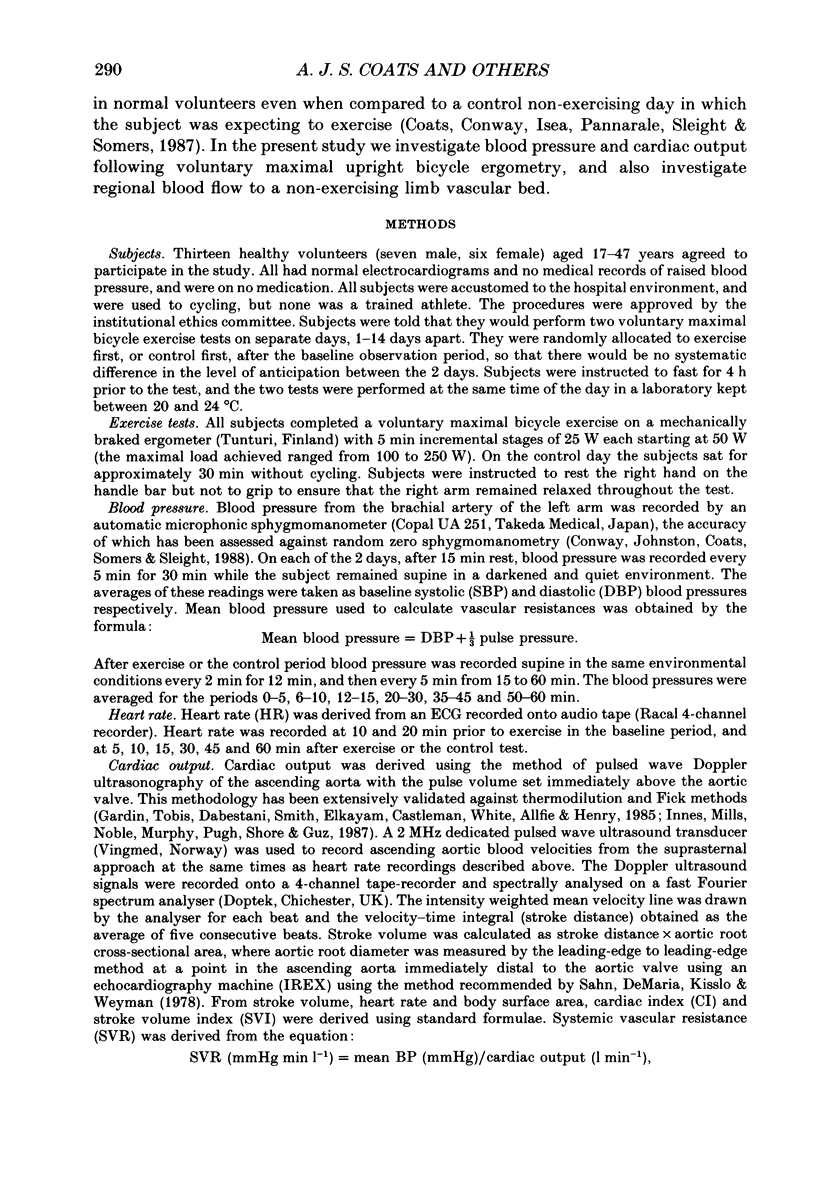
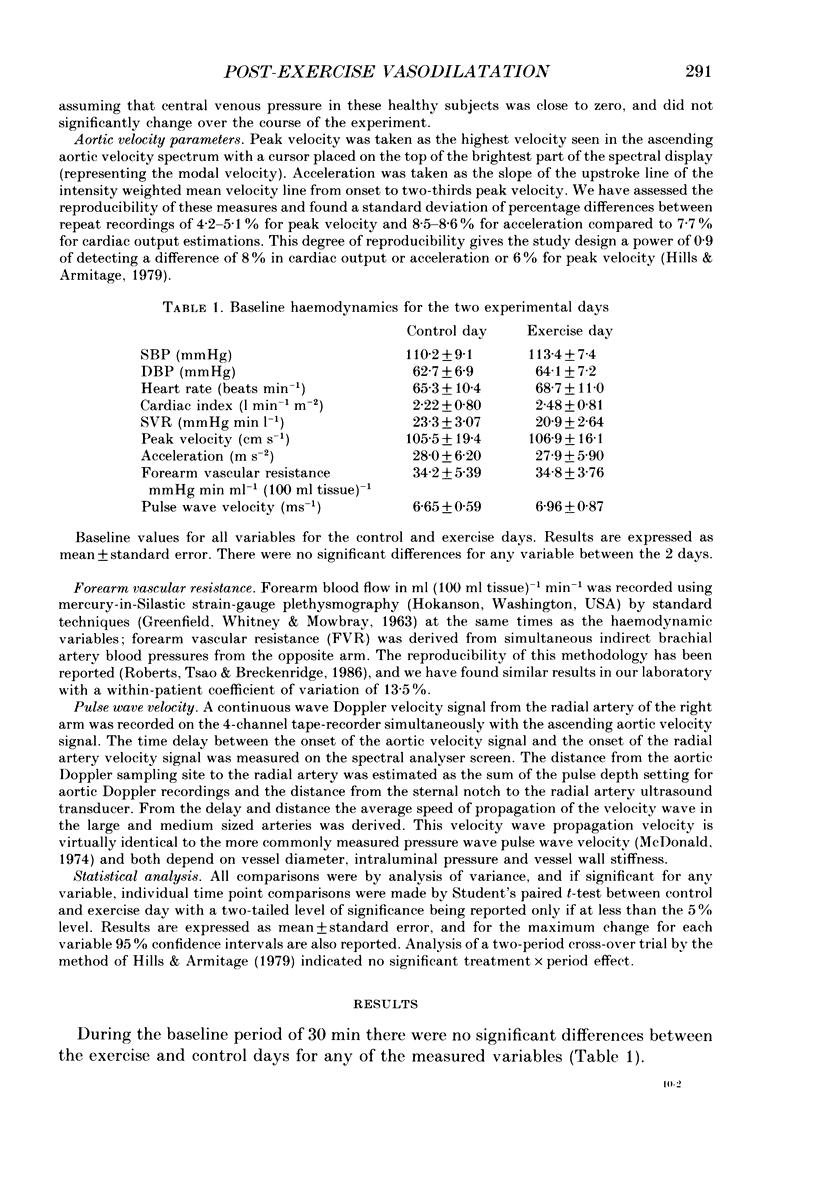
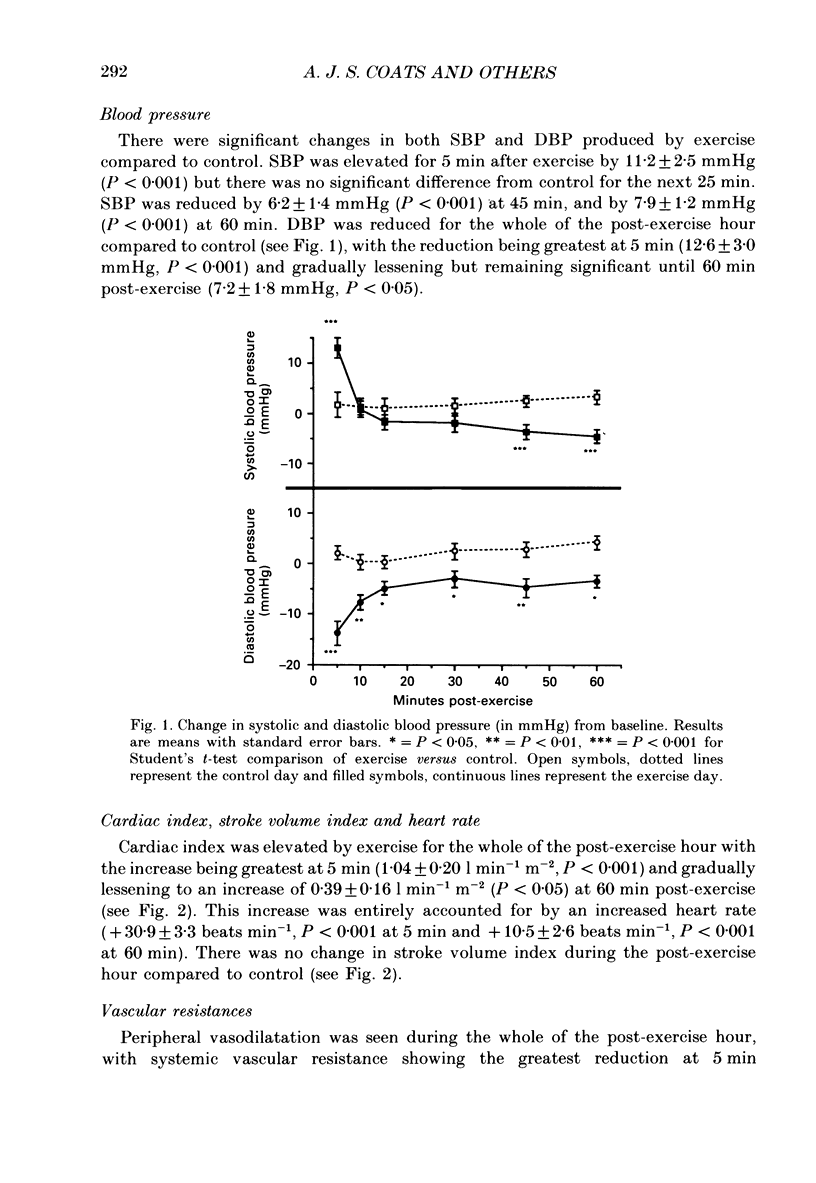

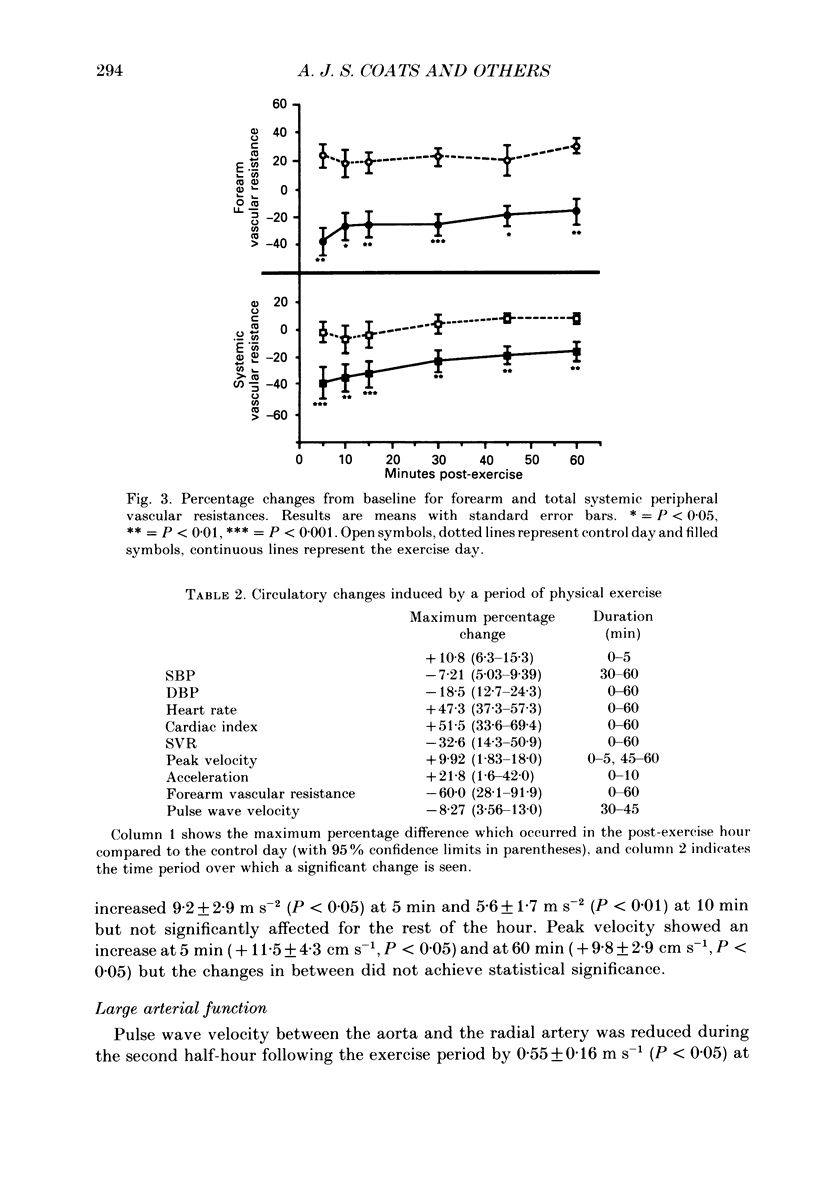

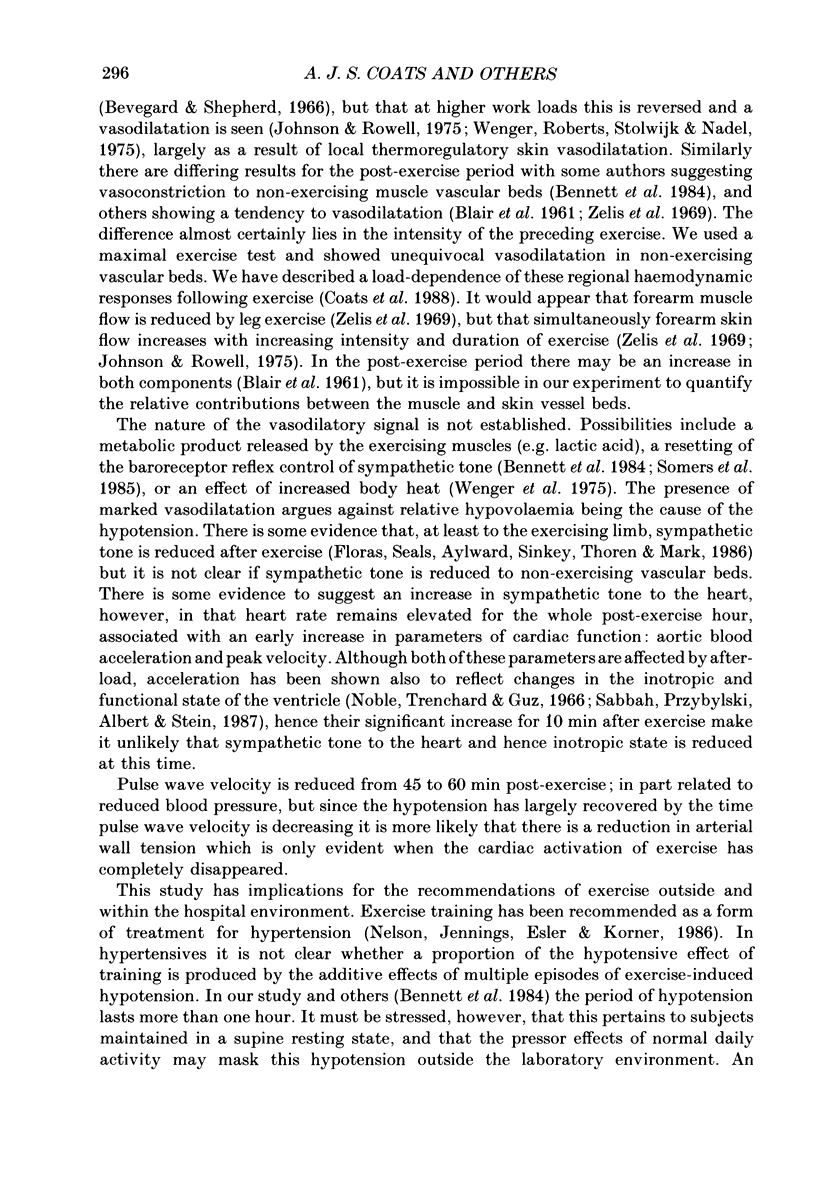
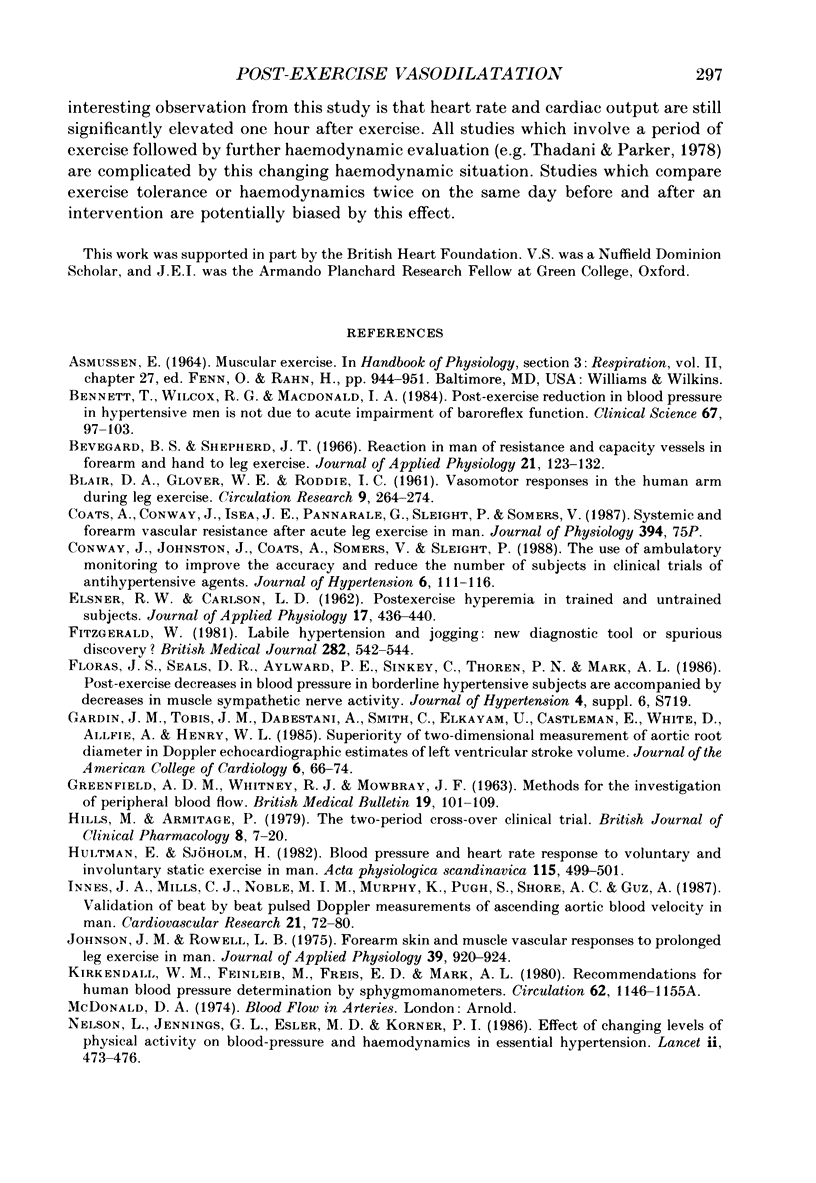
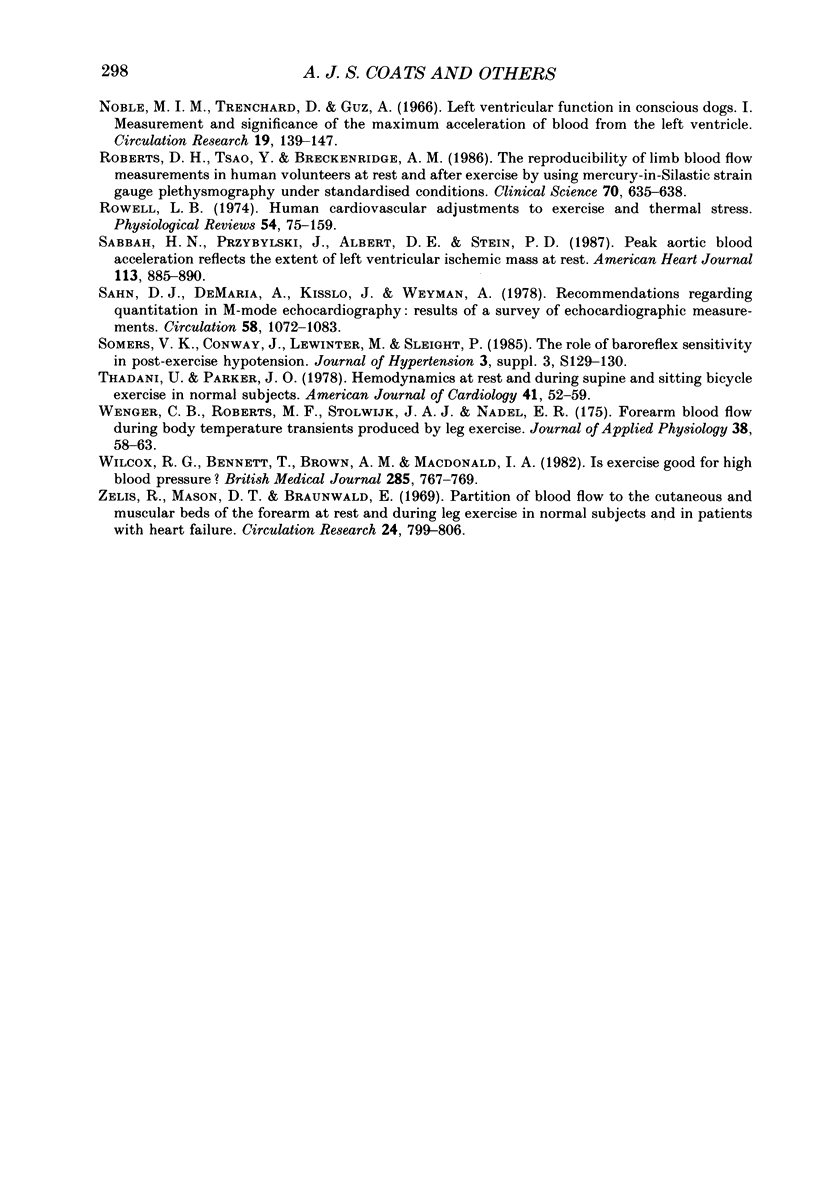
Selected References
These references are in PubMed. This may not be the complete list of references from this article.
- Bennett T., Wilcox R. G., Macdonald I. A. Post-exercise reduction of blood pressure in hypertensive men is not due to acute impairment of baroreflex function. Clin Sci (Lond) 1984 Jul;67(1):97–103. doi: 10.1042/cs0670097. [DOI] [PubMed] [Google Scholar]
- Bevegård B. S., Shepherd J. T. Reaction in man of resistance and capacity vessels in forearm and hand to leg exercise. J Appl Physiol. 1966 Jan;21(1):123–132. doi: 10.1152/jappl.1966.21.1.123. [DOI] [PubMed] [Google Scholar]
- Conway J., Johnston J., Coats A., Somers V., Sleight P. The use of ambulatory blood pressure monitoring to improve the accuracy and reduce the numbers of subjects in clinical trials of antihypertensive agents. J Hypertens. 1988 Feb;6(2):111–116. [PubMed] [Google Scholar]
- Fitzgerald W. Labile hypertension and jogging: new diagnostic tool or spurious discovery? Br Med J (Clin Res Ed) 1981 Feb 14;282(6263):542–544. doi: 10.1136/bmj.282.6263.542. [DOI] [PMC free article] [PubMed] [Google Scholar]
- GREENFIELD A. D., WHITNEY R. J., MOWBRAY J. F. Methods for the investigation of peripheral blood flow. Br Med Bull. 1963 May;19:101–109. doi: 10.1093/oxfordjournals.bmb.a070026. [DOI] [PubMed] [Google Scholar]
- Gardin J. M., Tobis J. M., Dabestani A., Smith C., Elkayam U., Castleman E., White D., Allfie A., Henry W. L. Superiority of two-dimensional measurement of aortic vessel diameter in Doppler echocardiographic estimates of left ventricular stroke volume. J Am Coll Cardiol. 1985 Jul;6(1):66–74. doi: 10.1016/s0735-1097(85)80255-2. [DOI] [PubMed] [Google Scholar]
- Hills M., Armitage P. The two-period cross-over clinical trial. Br J Clin Pharmacol. 1979 Jul;8(1):7–20. doi: 10.1111/j.1365-2125.1979.tb05903.x. [DOI] [PMC free article] [PubMed] [Google Scholar]
- Hultman E., Sjöholm H. Blood pressure and heart rate response to voluntary and nonvoluntary static exercise in man. Acta Physiol Scand. 1982 Aug;115(4):499–501. doi: 10.1111/j.1748-1716.1982.tb07110.x. [DOI] [PubMed] [Google Scholar]
- Innes J. A., Mills C. J., Noble M. I., Murphy K., Pugh S., Shore A. C., Guz A. Validation of beat by beat pulsed Doppler measurements of ascending aortic blood velocity in man. Cardiovasc Res. 1987 Jan;21(1):72–80. doi: 10.1093/cvr/21.1.72. [DOI] [PubMed] [Google Scholar]
- Johnson J. M., Rowell L. B. Forearm skin and muscle vascular responses to prolonged leg exercise in man. J Appl Physiol. 1975 Dec;39(6):920–924. doi: 10.1152/jappl.1975.39.6.920. [DOI] [PubMed] [Google Scholar]
- Kirkendall W. M., Feinleib M., Freis E. D., Mark A. L. Recommendations for human blood pressure determination by sphygmomanometers. Subcommittee of the AHA Postgraduate Education Committee. Circulation. 1980 Nov;62(5):1146A–1155A. [PubMed] [Google Scholar]
- Nelson L., Jennings G. L., Esler M. D., Korner P. I. Effect of changing levels of physical activity on blood-pressure and haemodynamics in essential hypertension. Lancet. 1986 Aug 30;2(8505):473–476. doi: 10.1016/s0140-6736(86)90354-5. [DOI] [PubMed] [Google Scholar]
- Roberts D. H., Tsao Y., Breckenridge A. M. The reproducibility of limb blood flow measurements in human volunteers at rest and after exercise by using mercury-in-Silastic strain gauge plethysmography under standardized conditions. Clin Sci (Lond) 1986 Jun;70(6):635–638. doi: 10.1042/cs0700635. [DOI] [PubMed] [Google Scholar]
- Rowell L. B. Human cardiovascular adjustments to exercise and thermal stress. Physiol Rev. 1974 Jan;54(1):75–159. doi: 10.1152/physrev.1974.54.1.75. [DOI] [PubMed] [Google Scholar]
- Sabbah H. N., Przybylski J., Albert D. E., Stein P. D. Peak aortic blood acceleration reflects the extent of left ventricular ischemic mass at risk. Am Heart J. 1987 Apr;113(4):885–890. doi: 10.1016/0002-8703(87)90048-2. [DOI] [PubMed] [Google Scholar]
- Sahn D. J., DeMaria A., Kisslo J., Weyman A. Recommendations regarding quantitation in M-mode echocardiography: results of a survey of echocardiographic measurements. Circulation. 1978 Dec;58(6):1072–1083. doi: 10.1161/01.cir.58.6.1072. [DOI] [PubMed] [Google Scholar]
- Somers V. K., Conway J., LeWinter M., Sleight P. The role of baroreflex sensitivity in post-exercise hypotension. J Hypertens Suppl. 1985 Dec;3(3):S129–S130. [PubMed] [Google Scholar]
- Thadani U., Parker J. O. Hemodynamics at rest and during supine and sitting bicycle exercise in normal subjects. Am J Cardiol. 1978 Jan;41(1):52–59. doi: 10.1016/0002-9149(78)90131-5. [DOI] [PubMed] [Google Scholar]
- Wilcox R. G., Bennett T., Brown A. M., Macdonald I. A. Is exercise good for high blood pressure? Br Med J (Clin Res Ed) 1982 Sep 18;285(6344):767–769. doi: 10.1136/bmj.285.6344.767. [DOI] [PMC free article] [PubMed] [Google Scholar]
- Zelis R., Mason D. T., Braunwald E. Partition of blood flow to the cutaneous and muscular beds of the forearm at rest and during leg exercise in normal subjects and in patients with heart failure. Circ Res. 1969 Jun;24(6):799–806. doi: 10.1161/01.res.24.6.799. [DOI] [PubMed] [Google Scholar]


